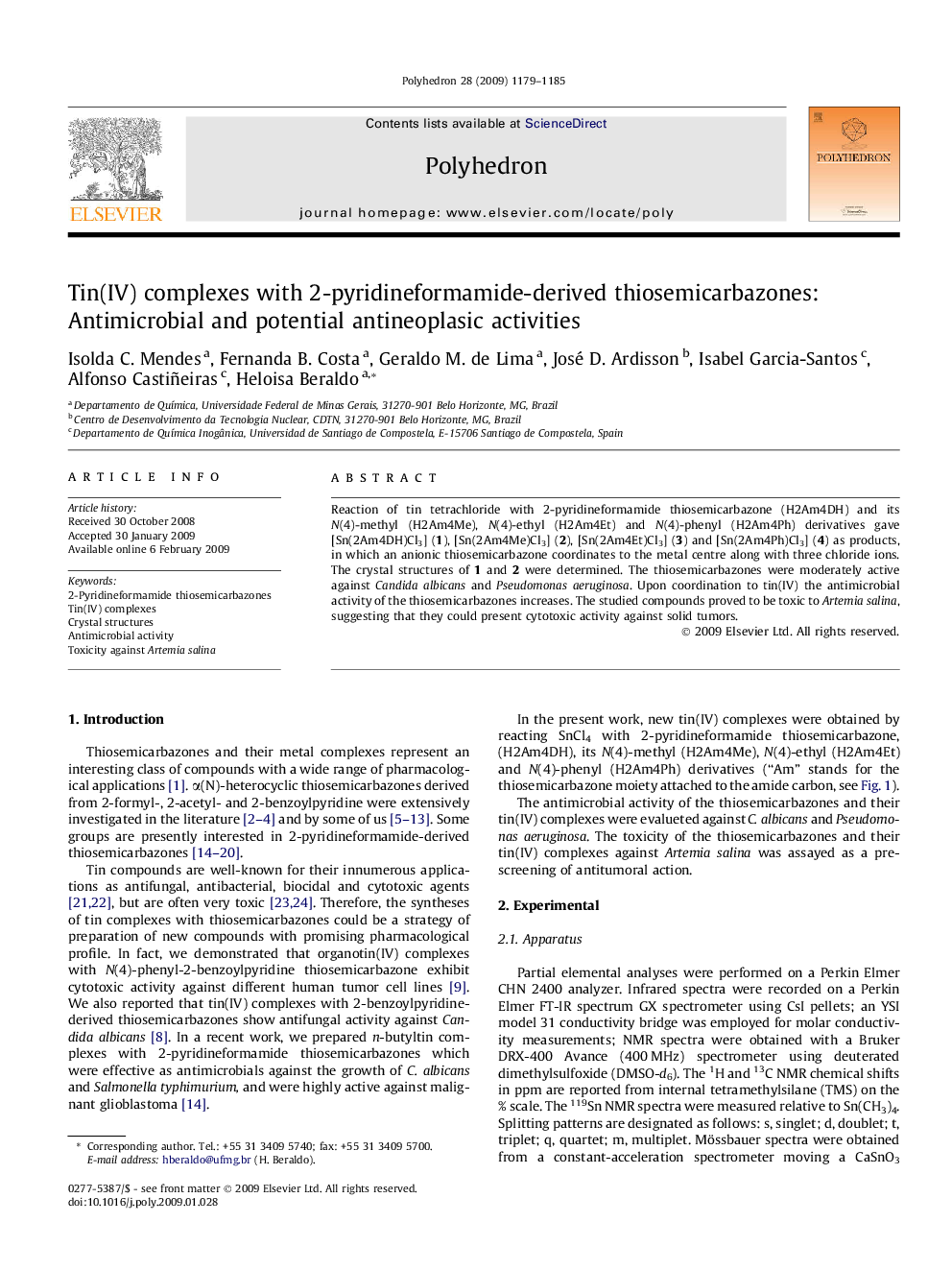| Article ID | Journal | Published Year | Pages | File Type |
|---|---|---|---|---|
| 1340260 | Polyhedron | 2009 | 7 Pages |
Reaction of tin tetrachloride with 2-pyridineformamide thiosemicarbazone (H2Am4DH) and its N(4)-methyl (H2Am4Me), N(4)-ethyl (H2Am4Et) and N(4)-phenyl (H2Am4Ph) derivatives gave [Sn(2Am4DH)Cl3] (1), [Sn(2Am4Me)Cl3] (2), [Sn(2Am4Et)Cl3] (3) and [Sn(2Am4Ph)Cl3] (4) as products, in which an anionic thiosemicarbazone coordinates to the metal centre along with three chloride ions. The crystal structures of 1 and 2 were determined. The thiosemicarbazones were moderately active against Candida albicans and Pseudomonas aeruginosa. Upon coordination to tin(IV) the antimicrobial activity of the thiosemicarbazones increases. The studied compounds proved to be toxic to Artemia salina, suggesting that they could present cytotoxic activity against solid tumors.
Graphical abstractThe tin(IV) complexes [Sn(2Am4DH)Cl3] (1), [Sn(2Am4Me)Cl3] (2), [Sn(2Am4Et)Cl3] (3) and [Sn(2Am4Ph)Cl3] (4) with 2-pyridineformamide thiosemicarbazone (H2Am4DH) and its N(4)-methyl (H2Am4Me), N(4)-ethyl (H2Am4Et) and N(4)-phenyl (H2Am4Ph) derivatives were obtained. The thiosemicarbazones showed moderate antimicrobial activity against Pseudomonas aeruginosa and Candida albicans. On coordination to tin(IV) the antimicrobial activity increases. The studied compounds were toxic to Artemia salina, indicating that they could present antineoplasic activity against solid tumors.Figure optionsDownload full-size imageDownload as PowerPoint slide
